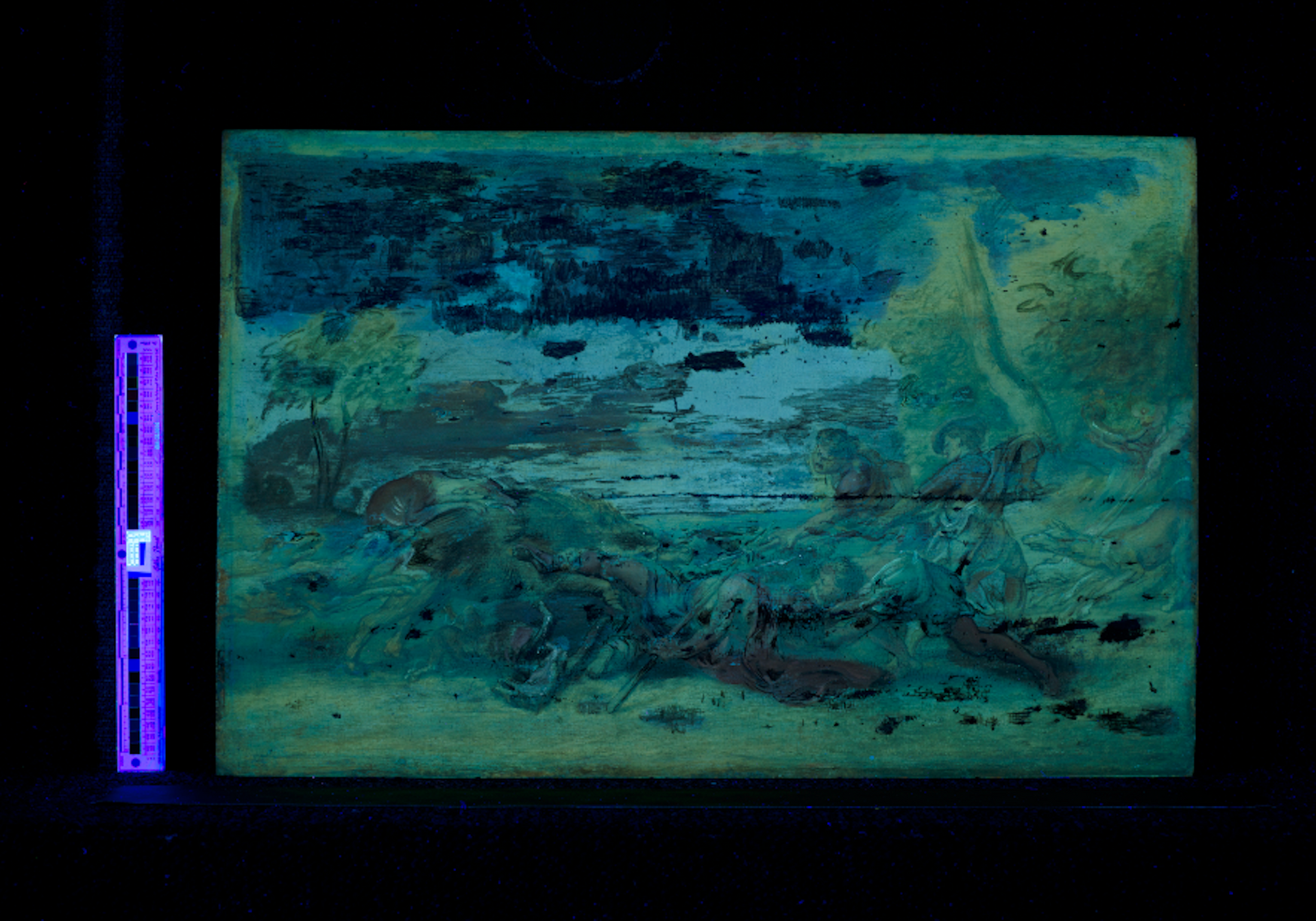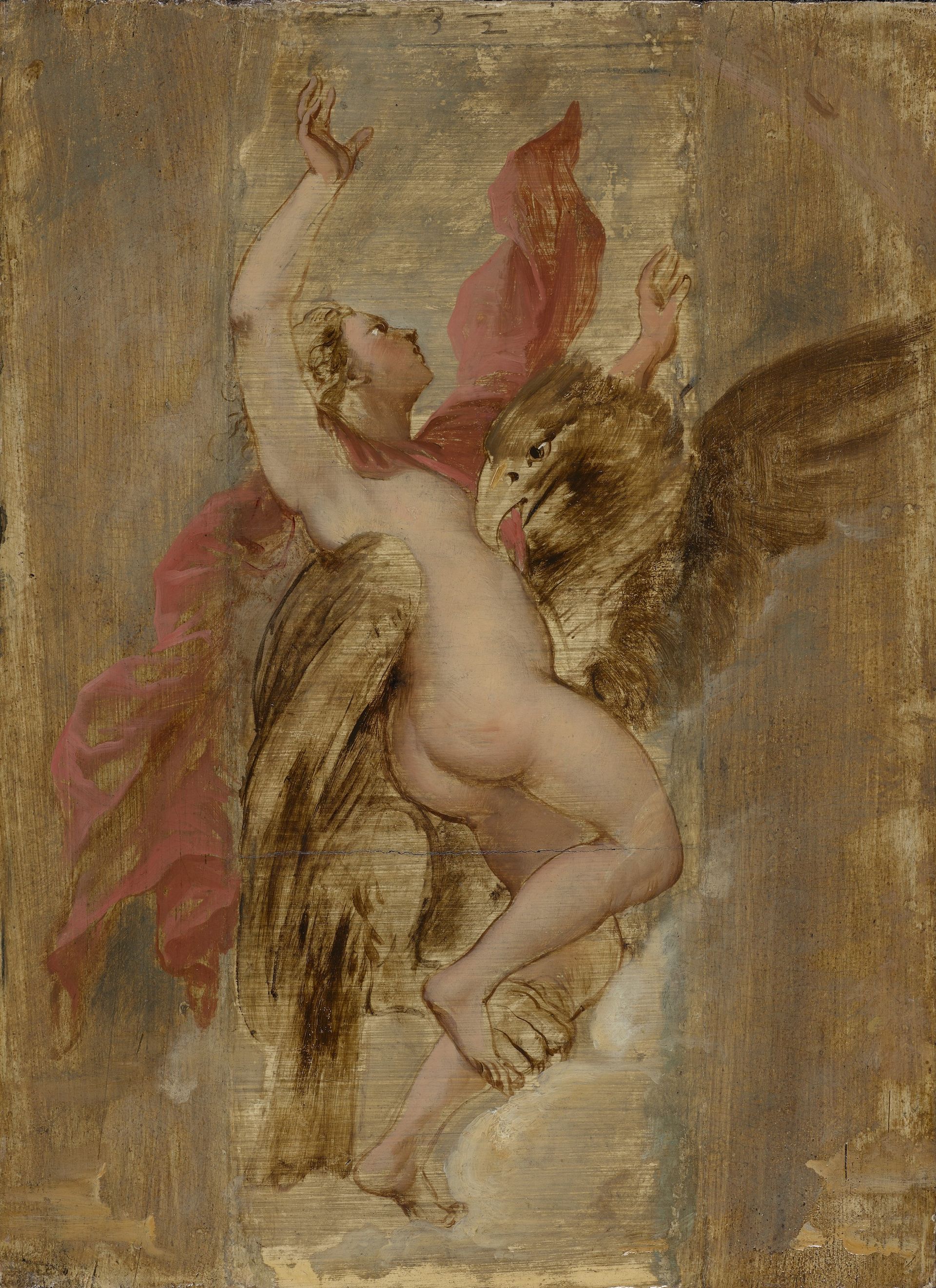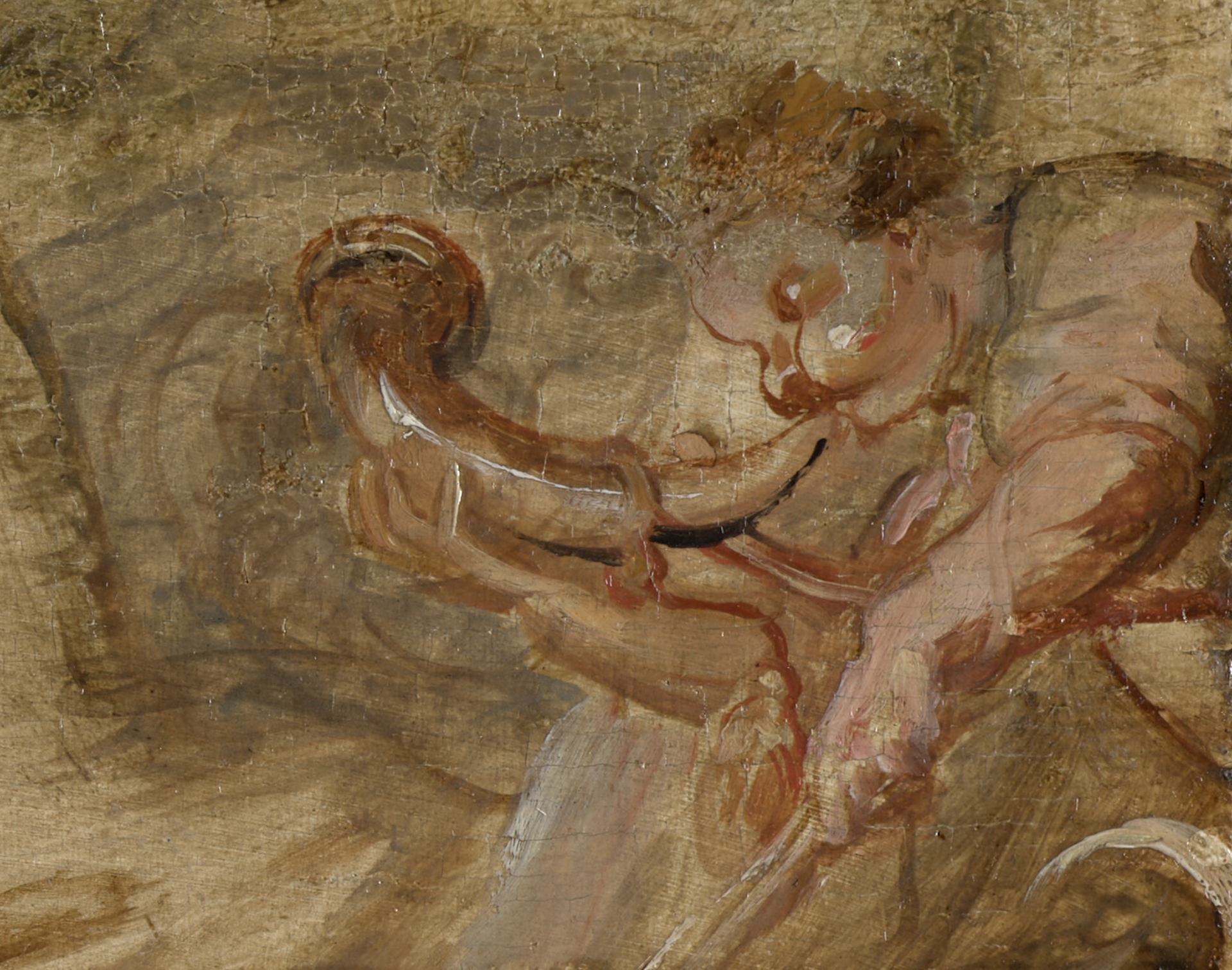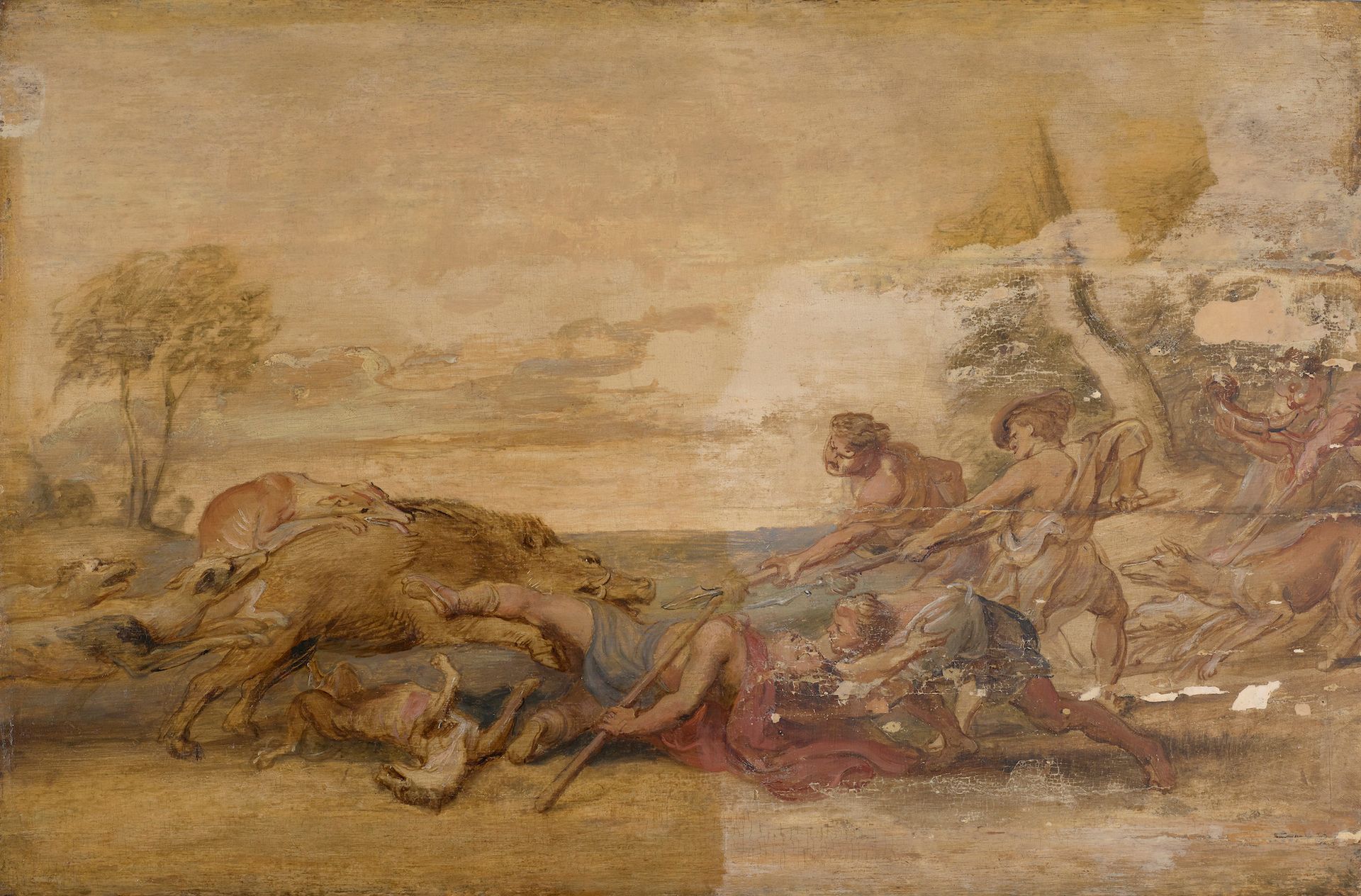The oil-on-wood-panel sketch squirrelled away for decades in the storage rooms of the Princeton University Art Museum was a head scratcher. Titled Death of Adonis and dated to 1639, the work was listed as “formerly attributed” to Peter Paul Rubens—an odd distinction, since the artist’s extensive catalogues often describe works not clearly by the Old Master as copies or done by his studio circle. A thick layer of goopy brown varnish covered the entire painting, obscuring the details. “It was kind of impossible to see what was underneath,” says Ronni Baer, a curator and lecturer at the museum specialising in 17th-century European art. But Baer recognised something in the quick, assured lines that made her think this work was truly by Rubens’s own hand. “So I brought it to the conservation lab,” she says.
Princeton’s chief conservator, Bart J.C. Devolder, admits that Death of Adonis “looked really bad” when he first saw it. After unframing it, he put the painting under a UV light to see any later additions made to the centuries-old panel. “The thing lit up like a Christmas tree,” he says, and it became instantly clear that previous restorers were not “colouring within the lines”. The painting has been filled in over the years, and another piece of wood was added to the top by previous (perhaps well-meaning but overzealous) restorers to make it look more like a finished work than a sketch. Tiny fake cracks were even painted on to make the new additions appear more antique.

Peter Paul Rubens’s Death of Adonis (1639) under UV light, showing all of the previous restoration work Courtesy the Princeton University Art Museum
These later add-ons were even more glaring when Death of Adonis was compared to another oil sketch by Rubens, The Abduction of Ganymede, which Princeton acquired at auction in December 2021. Putting the two works side by side on the same easel made Devolder realise that the only way to reveal the artist’s sure-handed brushwork was to remove all the later paint and varnish layers.
“And that’s truly where I told Ronni, ‘I’ve been doing this for 23 years, and I’ve never been scared to do something,’” says Devolder, who worked on the Ghent Altarpiece by Jan and Hubert van Eyck before joining Princeton. But months of careful conservation work uncovered the loops and curls clearly made by Rubens while the original paint was still wet.

Peter Paul Rubens’s The Abduction of Ganymede (around 1636) Courtesy the Princeton University Museum of Art
Friso Lammertse, curator of 17th-century Dutch painting at the Rijksmuseum in Amsterdam, who has seen high-resolution images of Death of Adonis before and after restoration, is sure that the work is by Rubens. He points to the reddish-brown contour lines the artist typically used to sketch out his scenes with just a few strokes, which are newly clear in the faces and bodies of figures, and the “sheer energy” of the hunting scene, especially the dogs straining at their leashes. Rubens’s final sketches “are perhaps among his best, because they are so effective”, Lammertse says. “With a minimum of paint, he can tell a story.”
Death of Adonis was completed just a year before the artist’s own death in 1640, while he was suffering from gout but still found inspiration to paint at his country retreat, and the positions of some of the figures in the scene are similar to other works Rubens painted during his prolific career. “I really don’t know why Death of Adonis has ever been doubted,” Lammertse says.

Detail of Peter Paul Rubens’s Death of Adonis (1639) after cleaning and during inpainting. The reddish contour lines are evidence that Rubens painted this himself Courtesy the Princeton University Art Museum
In fact, when Princeton bought the work in 1930 (through a grant from the Carnegie Corporation), it proudly announced it as a major Rubens acquisition. The work’s poor condition was remarked on in published research over the years, and the late Rubens expert Julius Held noted in his 1980 catalogue of the Old Master’s oil sketches that he once considered the work to be a copy, but decided: “Contrary to my previously published opinion, I am now convinced that the Princeton sketch is the original one.”
At some point in the 1990s, Princeton downgraded the work to “formerly attributed” to Rubens. There is no firm record, Baer says, of when or why this took place, but it was probably due to a confluence of issues: the work’s condition; it being overlooked for a Rubens show organised by the scholar Peter C. Sutton in the 90s; an earlier conservator expressing concern about the imprimatura layer (the semi-translucent primer that is often “streaky” in Rubens’s work); and a dendrochronology report that dated the panel to the end of Rubens’s life but was interpreted as possibly after his death when accounting for the margin of error.

Peter Paul Rubens’s Death of Adonis (1639) at the beginning of the corrective restoration, with brownish varnish still on the left-hand side and overpainted trees Courtesy the Princeton University Art Museum
Bart Watteeuw, the director of the Rubenshuis in Antwerp, says that research on Rubens has been strengthened in recent years by a whole field of materials and visual technology, from high-resolution imaging to analysing the weave of the canvas he used, which has “opened up new avenues that were unavailable to earlier researchers”. But scholarship on the artist has always been based on a “consensus model” and “sometimes two very much respected scholars could have opposing opinions on the same picture”, Watteeuw adds.
Lammertse notes that Old Masters scholarship often goes through periods of being overly critical, and that works are later reconsidered with a more open eye. In 2013, for example, the Metropolitan Museum of Art deaccessioned a work it no longer believed to be by Rubens, only to see the painting reattributed to the Old Master two years later (although this still seems to be up for debate).
As for Princeton, it has now reattributed Death of Adonis to Rubens, and both sketches will be displayed in the museum’s new building, set to open in 2025. “It’s been a ride,” Devolder says of the entire process.










